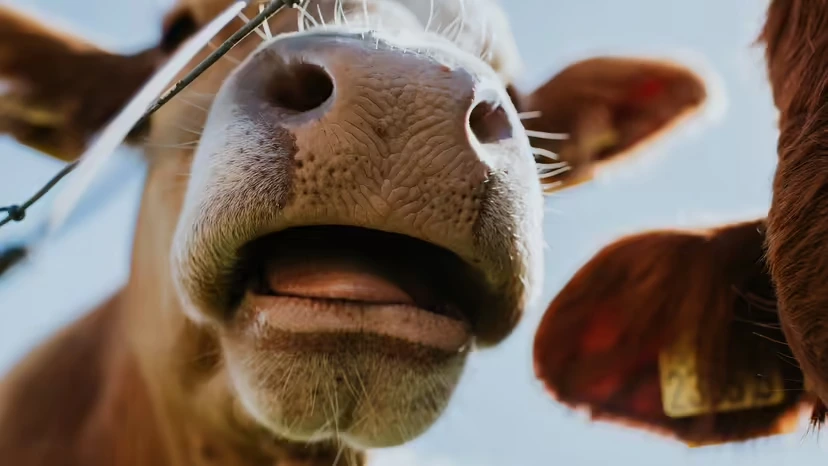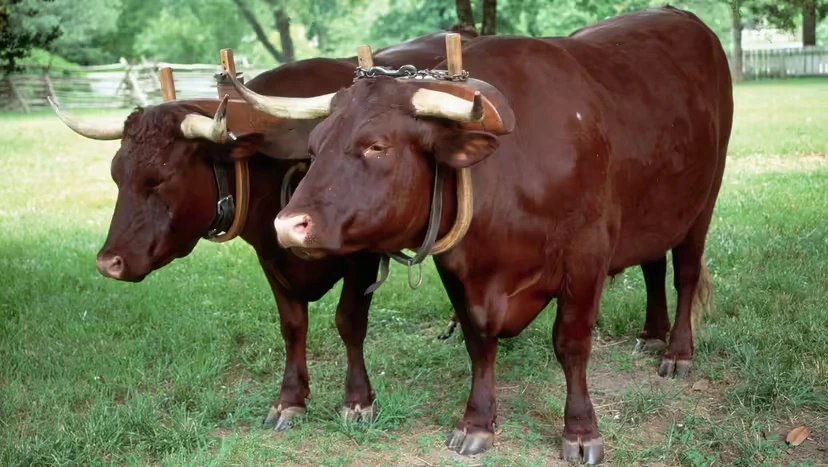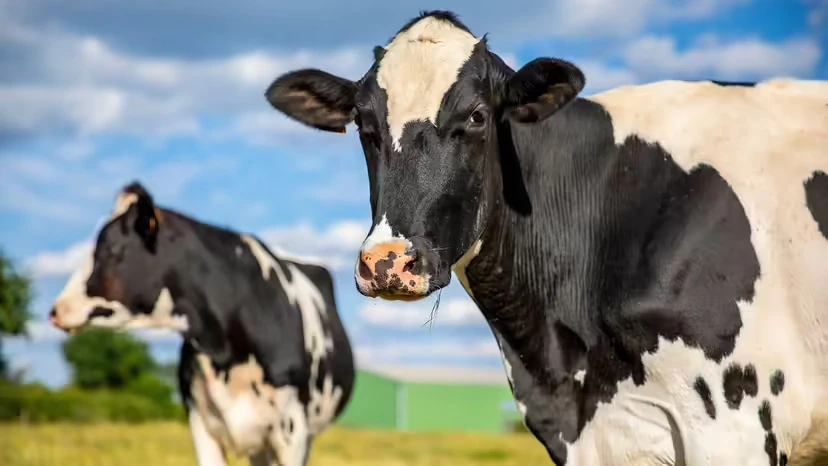TL;DR: Both oxen and cows are domestic cattle (Bos taurus). An ox is a castrated male trained as a draft animal (pulling, hauling, field work). A cow is an adult female that has calved, central to milk production and herd reproduction. Different biology + training = different roles, management, and value in the farm and food system.

Quick Definitions
Ox vs. Cow at a Glance (Table)
Bovine Terms You’ll See (and What They Mean)
How They’re Used on Farms
Management Priorities: What Each Needs
Common Misconceptions
Mini Buyer/Operator Notes
FAQs
Bottom Line
Who: A castrated male bovine (castrated young), trained for draft work.
Why castration? Lowers aggression and hormone swings → calmer, more controllable, safer to handle.
What they do: Pull plows and carts, skid logs, move loads—often in yoked pairs.
When they start: Handled and trained from young; widely considered fully capable after they’ve filled out (around ~4 years is typical for heavy work in many systems).

Who: An adult female cattle that has given birth to at least one calf.
Core value: Milk (dairy) and reproduction (keeping the herd going).
Also in beef: Cows may enter the beef supply when older or culled from the dairy/repro cycle.

| Dimension | Ox | Cow |
|---|---|---|
| Sex / status | Castrated male | Adult female (has calved) |
| Primary use | Draft power (pulling/hauling/field work) | Milk & reproduction, sometimes later meat |
| Training | Handled from young; draft training is core | No draft training; managed for repro & lactation |
| Build | Often heavier, thicker-muscled, deep-chested | Varies by breed & life stage (lactation changes body) |
| Temperament | Generally docile, steady, work-focused | Varies with breed & reproductive cycle |
| Daily priorities | Fit harness/yoke well, hoof care, conditioning, heat/cold management | Fertility, udder/teat health, nutrition, lactation curve, hoof care |
Bull: Intact male used for breeding.
Steer: Castrated male not trained for draft; raised for beef.
Ox: Castrated male trained for draft work.
Cow: Adult female that has calved.
Heifer: Young female that has not calved.
Calf: Young cattle (either sex), typically under 1 year.
Cattle: The correct plural/collective term. (Calling every animal a “cow” is common in casual speech but imprecise.)
Ideal where terrain or economics limit machinery: mountain farms, forestry, smallholder plots, floodplains.
Jobs: Plowing, carting, skidding logs, field hauling.
Work style: Often in pairs or teams; pace is steady, not sprinty.
Dairy engine: Fresh milk → cheese, yogurt, butter.
Reproduction: Produces the next generation; drives herd genetics and replacement heifers.
Beef link: Culled cows and male offspring feed into beef supply chains; by-products (hides, gelatins) feed other industries.
Oxen
Training plan: Voice cues, rein cues, consistent routines.
Fit & comfort: Correctly fitted yokes/harnesses; prevent sores.
Conditioning: Progressive workload; rest, water, electrolytes in heat.
Hoof health & footing: Traction on wet/uneven ground; routine trims.
Cows
Reproduction: Estrus detection, pregnancy checks, calving support.
Udder health: Mastitis prevention, clean milking routines.
Nutrition: Match diet to lactation stage; minerals, buffers, water access.
Comfort: Shade, bedding, ventilation; good stocking density.
“Any big male is an ox.”
No. An ox is castrated and trained for draft. A big intact male is a bull; a castrated male fed for beef is a steer.
“All female cattle are cows.”
Strictly: Only females that have calved are cows. Before first calving, she’s a heifer.
“Oxen are obsolete—tractors beat them everywhere.”
Depends. Tractors win on speed/scale; oxen win where fuel, parts, capital, or terrain make machines impractical—plus lower operating costs and local serviceability.
“Cows don’t enter the meat chain.”
They can and do—culled dairy cows are processed for beef; it’s a normal part of herd economics.
Selecting oxen: Choose sound feet/legs, deep heart-girth, calm demeanor, good pair match for size and stride. Start handling young.
Starting a dairy cow: Verify udder/teat conformation, SCC/udder health history, calm milking behavior, and body condition appropriate to stage of lactation.
Welfare is ROI: Shade, clean water, quality forage, and regular hoof care dramatically reduce downtime and vet bills—for both oxen and cows.
Q: Why castrate future oxen early?
A: Early castration reduces aggression, improves focus, and simplifies training—making a safer, steadier draft partner.
Q: Can a cow be trained for draft?
A: It’s possible but uncommon and inefficient—milking and reproduction are her main economic roles.
Q: What’s the difference between an ox and a steer again?
A: Both are castrated males. A steer is raised for meat (no draft training). An ox is trained for work (draft animal).
Q: Is it wrong to call all cattle “cows”?
A: Casual speech does it all the time. In farming, veterinary, and education contexts, use precise terms (cattle, cow, heifer, bull, steer, ox) to avoid confusion.
One species, different careers: Oxen supply muscle, cows supply milk and calves.
Right animal, right management: Draft training vs. reproductive and lactation management are two distinct disciplines.
Precision language helps: Knowing the terms clarifies conversations about animal welfare, production efficiency, and the food system.
We created this article in conjunction with AI technology, then made sure it was fact-checked and edited by a Animals Top editor.